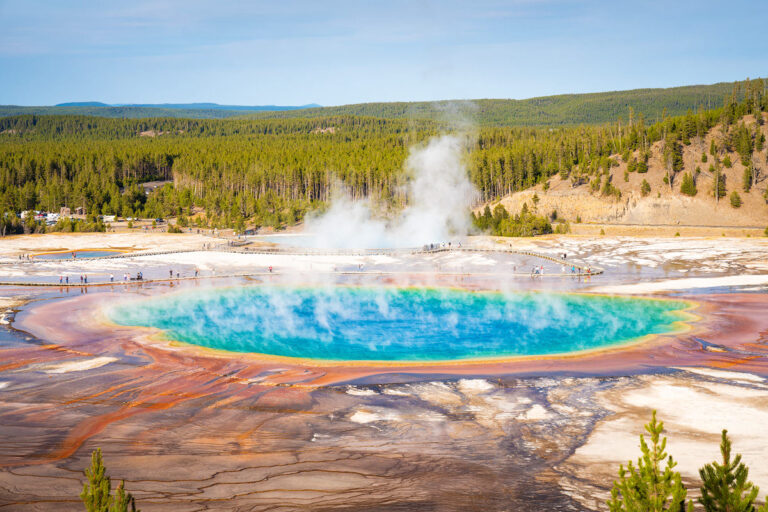Yellowstone National Park, with its geysers erupting like celestial fountains, mud pots bubbling with primordial fury, and wildlife grazing amidst geothermal wonders, is a destination etched in the American imagination. But like a fickle diva, Yellowstone has its off days, and venturing there at the wrong time can transform your dream vacation into a logistical nightmare. So, before you pack your hiking boots and bear spray, heed this warning: winter in Yellowstone is not for the faint of heart.
The Frigid Embrace of Winter
Imagine a world blanketed in snow, roads snaking through icy tunnels, and temperatures that dip below -40°F (-40°C). This is the reality of Yellowstone in the clutches of winter, from December to February. While the stark beauty of a snow-covered landscape holds its own allure, it comes with a hefty price tag in terms of accessibility and activities.
Roads Closed, Dreams Crushed: The majority of Yellowstone’s roads, including the scenic Grand Loop Road, succumb to winter’s icy grip. Only the roads connecting Mammoth Hot Springs and Gardiner, Montana, remain open, significantly limiting your exploration. Forget about driving to Old Faithful or witnessing the Grand Canyon of the Yellowstone; these iconic landmarks become tantalizing mirages just out of reach.
Nature’s Hibernation: The park’s geothermal wonders, though still alive and kicking beneath the snow, lose their theatrical flair. Old Faithful’s eruptions become less frequent and shrouded in mist, and the vibrant colors of the paint pots are muted under a blanket of white. The vibrant wildlife scene also lulls into winter slumber, with bears hibernating and many bird species migrating south.
Brrr-ave Adventures: While winter activities like cross-country skiing and snowshoeing exist, they cater to a niche audience and require specialized equipment and experience. Even seasoned adventurers face the challenges of extreme cold and limited daylight hours, making exploration a risky proposition for most visitors.
Beyond the Frozen Gates: Alternative Winter Adventures
If the lure of Yellowstone’s winter wonderland proves irresistible, consider these alternatives:
- Yellowstone Ski Country: Adjacent to the park, West Yellowstone and Cooke City offer a haven for winter sports enthusiasts, with downhill skiing, snowboarding, and Nordic trails aplenty.
- Mammoth Hot Springs: This thermal wonderland remains accessible by car and offers a glimpse into the park’s geothermal magic, even in winter. Stroll along the boardwalk and marvel at the steaming terraces and frozen waterfalls.
- Winter Lodging and Tours: Several hotels and lodges within the park and nearby towns stay open, offering cozy accommodations and guided winter tours. These tours, often led by experienced park rangers, provide a safe and informative way to experience the winter landscape.
Spring Awakening: A Shoulder Season Surprise
While winter presents a logistical hurdle, the shoulder seasons of April and May offer a sweet spot. The crowds are sparse, the snow gradually melts, and the park awakens from its winter slumber. Old Faithful erupts with renewed vigor, and wildlife emerges from their dens, making it a prime time for animal sightings. However, be prepared for unpredictable weather and some road closures at higher elevations.
Know Your Priorities, Choose Your Season
Ultimately, the “worst” time to visit Yellowstone depends on your priorities. If you crave warm weather, accessible roads, and the full spectacle of the park’s geothermal features and wildlife, summer reigns supreme. But for those seeking solitude, adventure, and a unique perspective on this natural wonder, winter, with its challenges and charms, can offer an unforgettable experience.
Remember, Yellowstone is a dynamic ecosystem. Be sure to check the park’s official website for current road conditions, weather updates, and activity availability before planning your trip.
